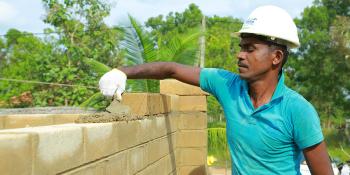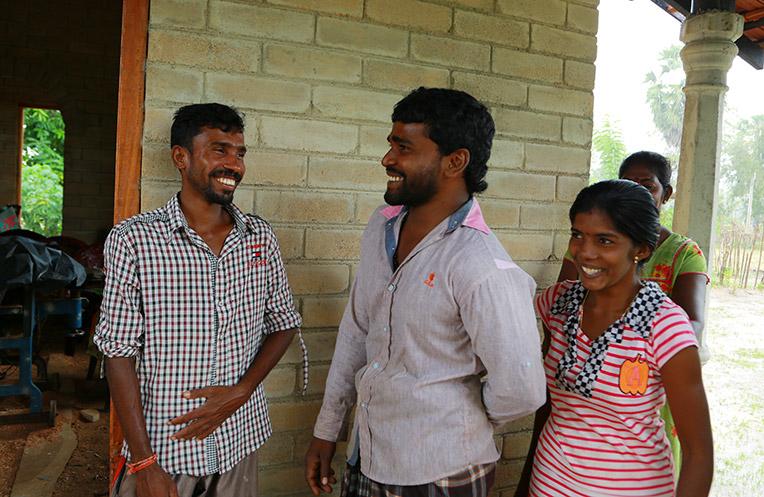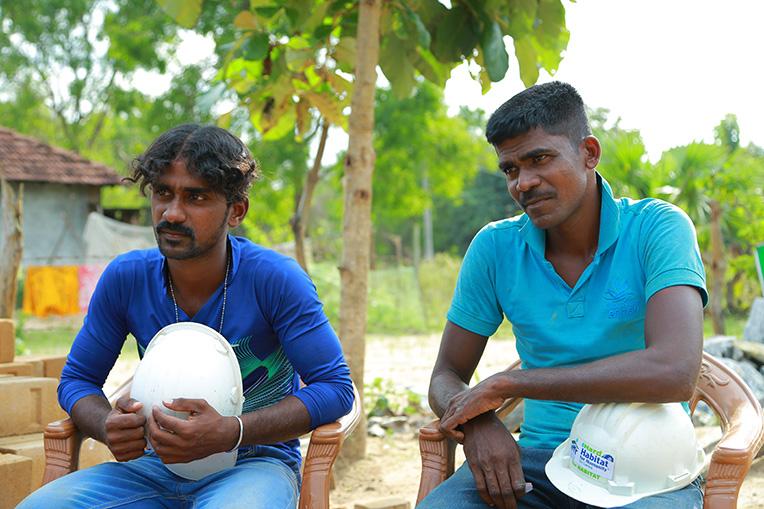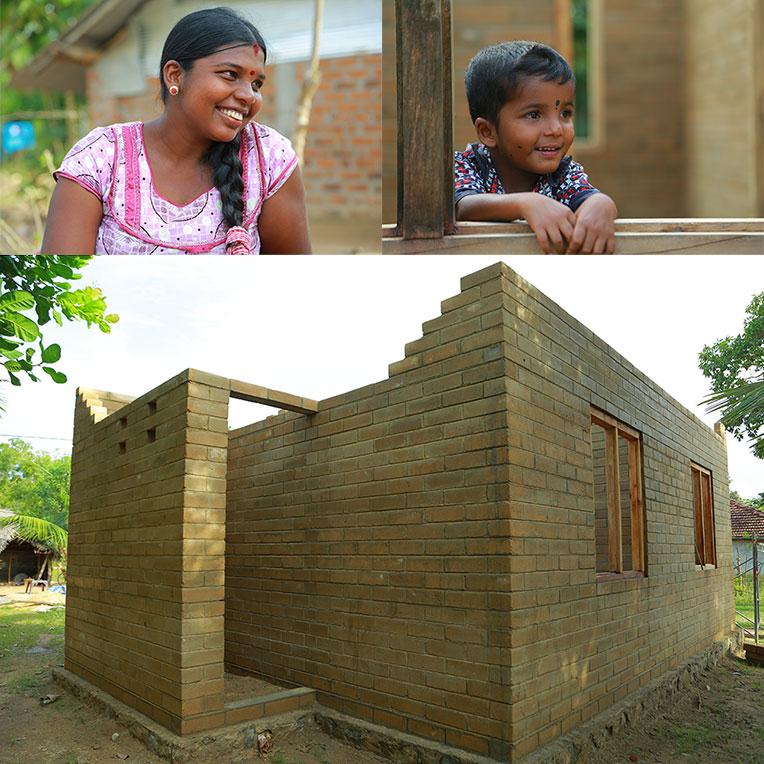
Masons' tale
Discover the advantages to building with alternative materials in the EU-funded “Homes not Houses” project.
MANILA (June 30, 2018) — For homeowner-driven construction, user acceptance is key to the success of alternative materials and technologies that are promoted in the “Homes not Houses” project funded by the European Union in Sri Lanka. Local masons play an important role because they serve as technical advisers to the families, according to a feasibility report that assessed the suitability of earth-based building materials.
Jointly implemented by Habitat for Humanity Sri Lanka and World Vision Sri Lanka, the multi-year project aims to deliver lasting solutions beyond mere shelter. The promotion of compressed stabilized earth blocks and other alternative materials that use what is locally available will support the establishment of local value-added chains and livelihoods.
While the feasibility study cited CSEBs as a low carbon, low embodied energy solution for sustainable development, not everyone can get used to the new materials. According to Sasikaran Thangavel, many masons in Navakirinagar village, Batticaloa district in the east, are unable to build with CSEBs. Head mason Thangavel, 29, explains: “The challenge is that each block — width and length — should be properly measured or the wall construction will fail.” He adds: “I’m satisfied that I could complete a house using the blocks.”

Head mason Sasikaran Thangavel (left) with Thilipakaran and his wife Nilojini whose parents have built a house made of compressed stabilized earth blocks. Photos: Habitat for Humanity/Meera Mohideen Nihal.
The feasibility study also noted that the larger sizes of CSEBs may not appeal to masons who can build very quickly with fired bricks. While local masons Supramaniam Puthalvan and Karunan Ramraj agree it is faster with bricks, they cite several advantages to CSEB construction. Puthalvan, 37, says: “Building walls with CSEBs is very easy. When I use fired bricks, I have to use a string line for every level of bricks as I need to check for a straight edge. By using a hammer, I can make the CSEBs more level.” He has recently built a house for his own family using compressed stabilized earth blocks.
Fellow mason Ramraj, 26, cites an aesthetic factor. “When I build walls with fired bricks, they don’t look nice without plastering. With compressed stabilized earth blocks, they look nice even without plastering. The work is very neat.”

Local masons Karunan Ramraj (left) and Supramaniam Puthalvan like the ease of building with compressed stabilized earth blocks as well as the smooth finish of the blocks.
Their positive experiences reflect the findings in a research paper that was presented at the International Conference on Sustainable Built Environment in Kandy, Sri Lanka, in December 2010. The major advantages of CSEBs include: energy efficiency; elimination of plastering; better block finish; simple techniques that maximize local resources and skills; decentralized production systems and small-scale operations that generate local employment; and reduced cost and energy involved in transportation of building products.
For future homeowner Prema, she accepted the alternative building materials after visiting a model house made of CSEBs in Vilavettuvan village, Batticaloa, in August 2017. When she was inside the house, she realized that it was cool. “It’s a good block; I like it,” says the 24-year-old homemaker. As she likes to cook, she made up her mind when she saw the kitchen. She recommended the blocks to her husband who saw the model house for himself in December 2017.

(Clockwise from top left) Prema is looking forward to a better life for her son Thisan after they have moved into their house that is built with compressed stabilized earth blocks.
Home for her family of four — she recently gave birth to her second child, a daughter — is currently a brick-and-thatch house. She is concerned about the health of her three-year-old son Thisan who had surgery for congenital heart disease a day after he was born. She says: “I hope for a better life after moving into my new home.”
The local masons can identify with Prema’s wishes to build a better future. While Puthalvan and Ramraj can earn more if they were to work outside their villages, they have chosen to stay put. Ramraj says: “I like to stay with my family in my own village. If I work outside, my expenses increase.” He takes home about 2,000 Sri Lanka rupees (US$12.60) a day if he gets work.
According to Puthalvan, he can earn 3,000 to 4,000 rupees a day if he were to work outside his village, compared to his current average daily wage of 2,500 rupees.
Money is not his main motivation. “I’m doing it for my family and the community. That’s enough for me,” says Puthalvan.